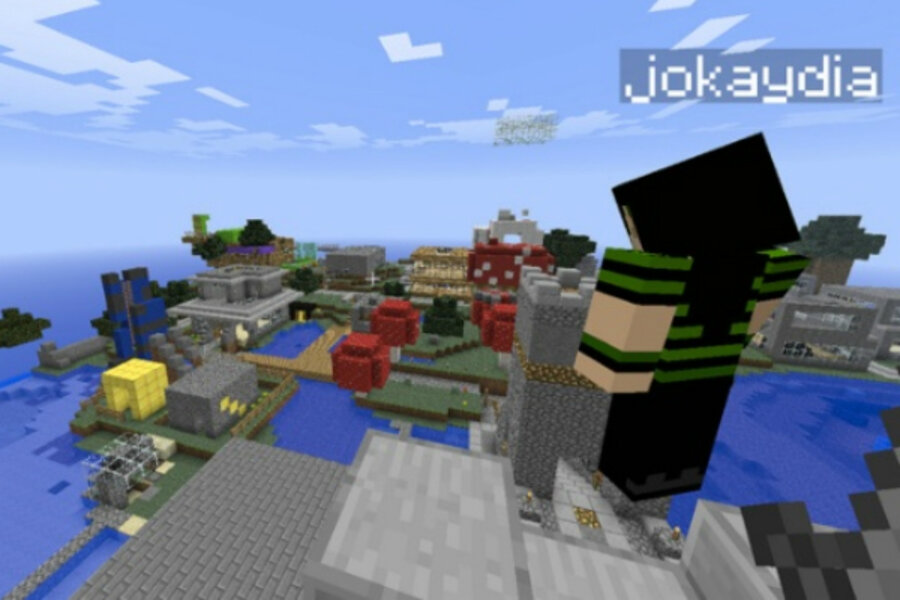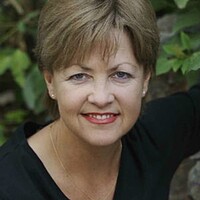Minecraft: The video game kids should waste time on this summer
Reporters and reviewers write about Minecraft as if it’s just like any other video game. Even this highly readable piece about its creator (Markus Persson, aka “Notch”) and its parent company (Mojang) by Harry McCracken in Time magazine doesn’t cover what makes it different from other games specifically for its kid (and parent) players. But he does bring out this extraordinary differentiating factor:
“No less lofty an authority than the United Nations sees Minecraft as a tool to improve human life. Last September, its U.N.-Habitat agency teamed up with Mojang to launch a program called Block by Block. It will use Minecraft to digitally reimagine 300 run-down public spaces in the next three years, giving people who live near them the chance to chime in on how they might be improved. First up: a dilapidated park in Nairobi’s business district and parts of its Kibera slum” (Kibera is home to some 1 million people – see this).
Distributed and shared safety
As for what might interest Minecraft players’ families is not only how it’s different from other video games but what it shares with all social media: distributed, collective, and/or shared safety (pick one adjective, but they all work). This game that looks like a virtual-LEGO land is literally all over the Internet and world. It’s not hosted by its so-called parent Mojang in Stockholm. It’s hosted and played on public and private servers all over the world, and it’s the ultimate example of what online safety is now and from now on in our very social media environment and connected world.
Kids under 10 host Minecraft games on their own servers, as do parents for their own kids, on laptops and family computers. So do schools I know of. Some people play the year-old Xbox 360 edition for console players. Others run adult-only Minecraft servers because they don’t want to “babysit” young players who sometimes like to be annoying and mess around with “griefing” or just ask too many questions in chat.
This is not exactly the kind of safety that can really be regulated for all by any single parent, jurisdiction, or law such as the US’s COPPA (Children’s Online Privacy Protection Act). Each Minecraft server has its own rules of engagement (or creation or play), its own atmosphere and mode (“survival,” “creative,” “adventure,” or “player vs. player” [PVP]). Some have more than one “world,” allowing players to choose their mode of play. Clearly, child safety in Minecraft is a shared proposition, just as it is in social media in general (because multiplayer console, online, and phone-based games are indeed social media) – shared by players themselves, server admins, families, classes, teachers, school policy, and shared with the designers of the games, apps and worlds and the conditions they create and change. More and more, online safety takes a village too.
What creating together safety can teach
Safety can also be a creative effort in game worlds. It can take some strategy, risk assessment and collaborative problem-solving, and maintaining it can develop resilience and social literacy.
And parents, I think you’ll love this: To Minecraft players themselves, “safe” means many things and suggests a lot about the creativity I’m talking about. Here are just a few examples:
- How to monster-proof one’s house
- How to safely light one’s building made of ice or snow
- How to build a fireplace in a wooden house so it doesn’t burn down
- How not to step in lava and how to build with it so that it doesn’t burn down your building overnight
- How to move or pick up TNT
- How to keep one’s wolf safe at night.
Minecraft at its most kid-friendly
There are definitely kid-safe public and semi-public Minecraft servers (called “whitelisted” servers because would-be players have to apply to join). One I know well is the Australia-based Massively @ Jokaydia. With 500 registered users worldwide, it’s run by educators who call it a Minecraft Guild for parents as well as kids (aged 4-16). Parents are welcome to participate, and everybody learns. But this is informal learning for parents and young people (“no teaching or lessons allowed in the game”). It’s also free (donations “gratefully accepted”), but there’s an application that people fill out to join.
There are certainly other kid-safe Minecraft servers out there. [Mojang doesn't endorse any single "safe" Minecraft server.] The servers come and go (it can be time-consuming to run a successful server for more than a few players), so do google “safe minecraft servers” to see what strikes you. When I did, I got about 1.7 million search results, but it looked like there were some good options right on the first results page.
Make a donation, get particle effects
If you google and click on some of them, you’ll probably learn a lot about Minecraft safety just from their descriptions of how they’re set up for play. Many are supported by donations. One example is SandlotMinecraft.com, which offers “perks” for donations (smart!), so don’t be surprised if Minecraft players at your house tell you, for example, that you really need to make a donation because they REALLY need “particle effects” such as “smoke, fire, hearts, ender dust, and TNT.” I mean, really, you’ll need them too when you’re in the game yourself!
So to sum up, the only two safety issues I can think of which parents may want to think about are 1) the age-old need for balance in our lives (because there are so many absorbing ways to have fun in the Minecraft sandbox and/or player vs. player game) and 2) the multiplayer experience (as with any multiplayer online game or online community like Xbox Live). Multiplayer – whether online, on phones, or on Xbox Live – means you don’t always know the people you’re playing with. Most kids are smart about that, but some need reminders not to share personal information with people they don’t know. But it can also be helpful to keep in mind that kids learn a lot from figuring out among themselves how to resolve arguments and get themselves out of fixes, and digital spaces like a Minecraft game are pretty safe environments in which to do that all-important learning and inner-guidance-system development that keep them safe the rest of their lives.
Minecraft advice for parents
My research turned up some great tips from seasoned Minecraft players, some of them from parents for fellow parents. Here’s a sampler:
- About “griefing”, defined as “the act of irritating and angering people in video games through the use of destruction, construction, or social engineering” at MinecraftWiki.net, which adds that it has become a real problem for server administrators and is probably why people screen potential players or “whitelist” their servers. Another problem is trolling, annoying other players by killing their avatars. These can be forms of online harassment or bullying and can either be tough for emotionally vulnerable kids or a tool for developing resilience, in-world “street smarts,” or strategy, risk-assessment, and social skills. So much depends on the child. There can be a lot of creativity in griefing too, whether offensive or defensive, and – as in life in general – there’s a spectrum between fun pranks and cruel pranks. See these 9 tips for dealing with a griefer in Minecraft at WikiHow and this great advice (whether a player wants to partake in griefing or not) here.
- From a gamer and a gamer-parent: A comment from player “ZobmieRules” at SafeVideoGames.blogspot.com (do a page search for “ZobmieRules,” and this date and time: March 6, 2012 at 5:33. His/her first three words are “To any parent…”, so you could do a page search for that phrase too). Good Minecraft advice for parents by a parent (her kids are 5 and 7) can also be found at GameSpot – do a page search of her screenname VixenWolf11 here. She rates Minecraft “9.5.”
- From another mom: The user reviews at Common Sense Media are much more useful than that of the site’s own reviewer – check out that of 18-year-old “CsomeSence” here (his/her headline is “Clearly no ‘Common Sense’” or search for his/her screen name) and self-professed parent and educator “BayAreaMediaMaven,” who focuses on the potential risks to emotionally vulnerable children here.
- Hardcore safety: For players of this variant of “survival” mode Minecraft, see this at MinecraftWiki.net for 9 meaty survival tips like “build an in-door tree farm” as soon as possible; maintain situational awareness at all times; if a horde of skeletons approaches at the same time as a creeper, the skeletons are probably the bigger problem; and “wear at least Iron armour at all times, replacing it as it gets worn.”
Related links
- Minecraft: Xbox 360 Edition – the biggest upside is that it’s so plug-’n'-play for console gamers. According to a great review in VentureBeat.com, they can just start it up and start building. But serious Minecrafters will instantly see the downsides of no creative mode, no mods, and the fact that its features lag behind the computer version by about a year. BUT there are “great multiplayer options” for play among friends and fellow gamers via Xbox Live. (A reader can’t tell if the combat in the Xbox edition is “no fun” because the writer really just likes creating and building or because it’s no fun for people who love PvP mode on computers.) This edition had a “record-breaking launch” on May 9, 2012, and sold millions of copies within a few months of launch, Gamespot reported last October.
- Mining Minecraft for learning – a 3-part series of guest posts right here in NFN by Marianne Malmstrom, who teaches 3rd-through-8th-graders in Minecraft – “Part 1: Little gamers’ digital play through a teacher’s eyes,” “Part 2: Brilliance when students drive the learning,” and “Part 3: Safety & citizenship in games (do try this at home)“
- “Minecraft in education: How video games are teaching kids”
- Server admin challenges: Here’s a page that can give you a solid sense of the challenges of running a public Minecraft server, like those listed at Mojang’s Minecraft.net here (there are also “whitelist” servers where players have to be approved, or apply, before they can join).
- “What does ‘safe’ really look like in a digital age?”
- Time’s McCracken’s story about the making of his Minecraft story
The Christian Science Monitor has assembled a diverse group of the best family and parenting bloggers out there. Our contributing and guest bloggers are not employed or directed by the Monitor, and the views expressed are the bloggers' own, as is responsibility for the content of their blogs. Anne Collier blogs at NetFamilyNews.org.






